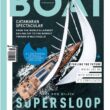The Financial Times (FT) is on top of the world. Seventeen years after it introduced a then almost-revolutionary paywall, the business daily has more than 1m paying subscribers; 75% are digital and 70% outside the UK. This is a 10% increase in subscribers in a year. Revenue and profits are also growing. Four years after it was acquired for £844m by Japanese media group Nikkei Inc, the 131-year-old FT now generates almost 60% of its revenue from readers. And, to crown a successful year, the company has just moved back into its historic former headquarters (built in pink sandstone to match the iconic colour of the FT’s pages) in the shadow of London’s St Paul”s Cathedral.
As the Trump presidency has helped to turbocharge the New York Times readership, so Brexit has helped the FT. The UK daily has built its subscriptions through painstakingly managing the data, vertical newsletters, personalised content and networking in print, video, audio, and events. As Digiday says, it has become expert at “tweaking, nudging and evolving the right experience for readers”. The publisher closely tracks the performance and behaviour of content and readers but an innovation is “Quality Reads” which identify the content where readers have read more than half of the article. Editors get weekly reports of how they’re doing. The FT also is working hard to get the attention of under-weight readership groups like women and millennials by targeting them with print and multimedia content.
While its coverage has long extended across politics, culture, and leisure, the publisher has been energetically investing in global information services, events and consulting across business and finance.
That B2B activity is key to the strategy of the Financial Times Group which is now so much more than it once was: a daily newspaper and some ancillary magazines. Indeed, while its 475 journalists (one-third outside the UK) produce the content that drives a multi-faceted information group, the newspaper’s own performance might seem less distinguished.
Its latest audited numbers in the UK show that, on weekdays, the FT is now selling under 25k copies (20.3k of them paid single copies, 4.2k subscriptions) – about one-third less than three years ago. The story is burnished by some 30k “multiple” copies, provided free for travellers at airports, rail stations, and hotels. But weekends are another story. The brilliantly distinctive FT Weekend edition sells some 62k copies, at a cover price of £4 (compared with £2.90 on weekdays). The Weekend’s more than doubled sales at a 40% higher cover price and advertising-stuffed leisure supplements and magazines (including How to Spend It) means the FT’s average revenue on Saturday is about equal to the newspaper’s revenue for all five weekdays put together.
Like other UK national dailies, the FT makes most of its profit on Saturday. Print continues to be a profit driver for these papers, not least because of the advertising and retail copy sales that don’t readily transfer to digital. But the sense in which the FT is much more than a salmon-pink newspaper is underlined by the company’s statutory accounts.
The UK-registered Financial Times Ltd made 2018 operating profit of £7.3m – almost double the previous year – on revenues of £323.6m that were slightly ahead. This is primarily the business of the newspaper and a range of ancillary activities including digital-print publications The Banker, Financial Adviser, Pensions Week, and Investors Chronicle. The company which employs some 1,300 people derives some 44% of its revenues from the UK (down from 54% in 2010).
The company is keen to emphasise that the ‘Financial Times Group’ made a total £25m in operating profit from £383m revenue in 2018. This means that a number of non-UK and mainly non-newspaper activities, principally in the US, made a cool £17.7m operating profit from revenue of £59.4m (a rich 30% margin, compared with just 2% for the UK-registered company).
This means that the Financial Times Group earns more than 50% of its profits from non-FT operations.
These international operations include: Medley Group Advisors (policy research for hedge funds, institutional investors and asset managers); Money-Media (global fund management); Longitude (corporate research); Ignites (mutual funds); and a range of JVs. They may also include the company’s recently-purchased majority shareholding in the Netherlands-based The Next Web (TNW).
TNW’s annual conference attracts some 17,500 delegates from more than 3,000 companies. It complements FT Live which now operates some 190 events annually, ranging from the FT Innovation Summit, in New York, to Managing Assets for UK Insurers, and the new Next Gen Festival, in London.
This week’s fourth FT Weekend Festival, in London (“The Ideas Festival of Our Age”), will have more than 3,800 delegates paying £90 per head – which is netting 25% more revenue than in 2018. The highly profitable, £800k-revenue event has 160 speakers across nine stages, which sounds like nothing less than an internationally transferable formula. Next year’s relocation to Regents Park, closer to Central London, will mark a big step-up in the event, and in the role (and profit) of exhibitions and festivals in the FT group.
The growing network of information services and events across finance, technology, strategy, research, and executive education underline the “runway” strategy that is, surely, vital for the future of all traditional media groups.
The company’s strong earnings from financial services may, over time, be surpassed by complementary global verticals including marketing services, energy, law, and technology. We know that the FT has wanted to acquire Jessica Lessin’s tech site The Information and we might expect it also to be interested in the UK’s under-loved Centaur Media, operator of Marketing Week, eConsultancy, the Festival of Marketing, and The Lawyer, as well as some of the event-based “associations” of senior executives. If it didn’t seriously contemplate acquiring Procurement Leaders, the FT would have noted the way in which the independent company effectively built its reader-users into a global professional association funded by data and events. The investment last month in the Business of Fashion (which links neatly to some of its FT Weekend content) also shows the breadth of vision.
The FT is printed in 17 sites across Europe, North America and Asia, and distributes some 105k copies around the world, in addition to the 60k paid and free in the UK. Its journalistic authority is key. But the anachronistic pages of stock market prices in the printed daily newspaper underline the sense in which it is gradually becoming almost “content marketing” for the FT’s digital services. But the newspaper-web site is not just a marketing platform, it is also the richly-invested creator of the company’s core content, communities and events. It continues to be the home of so much great journalism.
For all the success of its digital subscriptions, the Financial Times still has a lot of growing to do, not least in the Americas and Asia. But it is already a lesson for its publishing peers in how to use the legacy business as a runway for the development of new products and services, by:
- Maximising the performance of the core (newspaper) business – and not simply by cutting costs. The content, community and branding will outlast the print as generators of profit.
- Investing in technology to drive reader-user engagement
- Diversifying strongly in digital, events, research, education, and consulting.
- Building global reach (and searching for tomorrow’s winners) by investing in JVs, partnerships and strategic alliances.
It has other advantages too, including the highly-supportive ownership of the £2.5bn-revenue Nikkei Inc whose mere 3.6% pre-tax operating margins must also be some reassurance for the FT, which accounts for some 15% of parent company revenues. In addition to giving former journalist CEO John Ridding and FT Editor Lionel Barber the space to develop their ‘quality growth’ strategy, Nikkei executives comment on how the acquisition has helped their company become internationally-focused.
They describe their Financial Times relationship as a ‘partnership’ and are now collaborating together on JVs in data and executive education. As Ridding says: “The FT is 100% owned by Nikkei which is 100% owned by its employees.” A perfect long-term relationship.




